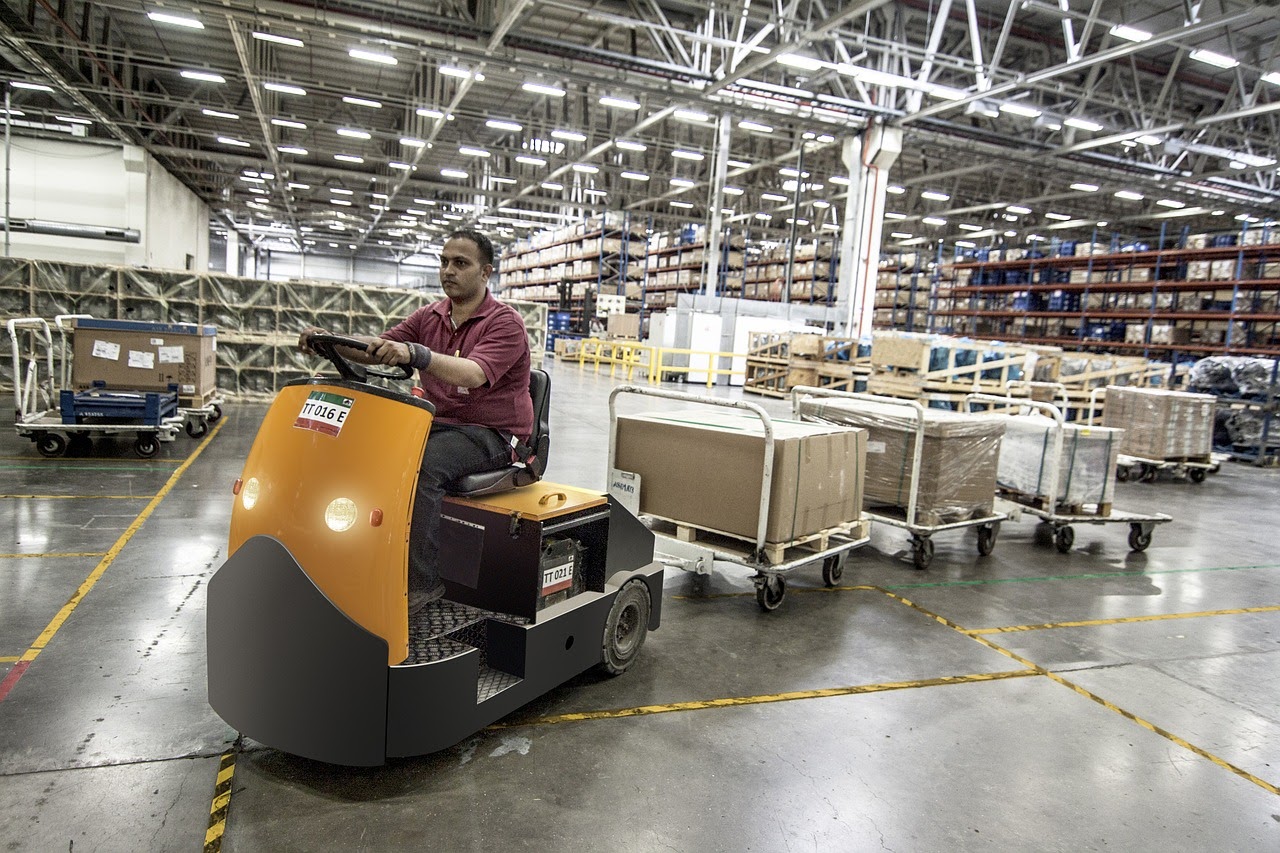
Have you ever wondered how Amazon warehouses around the world manage to deliver your order on the same day? How can you get fresh produce from one part of the world to another? The answer to these questions is material handling equipment.
Whether you’re someone who manages a logistics or shipping business, manufacturing or construction company, material handling equipment plays an important role in a wide range of commercial and industrial applications. The dramatic rise in online shopping and globalization both play a role in the demand for cost-effective, efficient material handling solutions.
Material handling equipment is machinery that allows employees to lift or transport materials from point A to point B. You can find a wide range of material handling equipment, all of which are categorized into two basic categories – manual and automatic. Both manual and automatic material handling equipment come with their own advantages and disadvantages. Here’s a quick summary of both types.
Automatic Material Handling Equipment
- Costlier and more difficult to handle as it requires trained employees;
- Fewer chances of accidents and damaged goods;
- Increased efficiency;
- Although costlier upfront, relatively cost-effective in the long term.
Manual Material Handling Equipment
- More affordable and easier to handle;
- Higher chances of accidents and damaging goods;
- More prone to human error, leading to downtime;
- Can be expensive in the long term;
- Require more human effort, which can be strenuous.
Categories of Material Handling Equipment
Transport Equipment
Transport equipment includes different types of vehicles, such as lifting trolleys, forklifts, cranes, etc., all of which are used for moving materials and loads in the facility, or out of it. They can be manually operated or automated.
Lifting Trolleys
Lifting trolleys are available in a wide range of shapes and sizes, and they can be used to transport just about anything. In warehouse and manufacturing facilities, an electric (battery) operated lifting trolley can be particularly useful. These pieces of material handling equipment can reduce worker fatigue and improve workplace ergonomics. Furthermore, you can purchase a sturdy lifting trolley that’s suitable for handling a wide range of loads while reducing the chances of accidents occurring. As a result, worker productivity and efficiency are improved,
and the transported goods are protected.
Conveyors
Conveyors, also known as conveyor belts, allow you to transport material on a fixed path between two points. You can find a wide range of conveyor types based on the type of load handled, their operating mechanism and location. For instance, you’ll find roller, chain, chute, slat, bucket, pneumatic and vertical conveyors.
Forklifts
Forklifts are another piece of indispensable material handling equipment. They’re essentially trucks that can pick up and move weights over long distances. There are two important things to keep in mind when buying a forklift. They can lift and transport weights up to a specific limit, and they work according to a certain center of gravity. These details are generally written on the number plate, and tampering with it is illegal. Forklifts feature a rear-wheel driving cabin, meaning that the operator should ideally have some rear driving experience before using one.
Storage Equipment
Storage equipment is made up of non-automated pieces used to hold your materials and products. Using the right storage system can increase space utilization and streamline your supply chain. There are a few popular types of storage equipment.
Storage Racking Systems
There are a few different types of racking systems, including drive-in racks, drive-through racks, sliding racks, and push-back racks. Drive-in racks are those that allow you to drive the transportation material handling equipment between the upright beams. Drive-through racks are quite similar, except they’re open at both ends. Sliding racks feature sliding rows of racks, and push-back racks allow for gravity-based movement on the materials and loads, allowing deep-reach storage. Other types of racking systems include carton-flow racks, pallet racks, and cantilever racks.
Shelving Systems
Durable and stand-alone shelving systems are generally made of strong galvanised steel, metal wires and melded steel. These shelving units are easy and quick to assemble, and you can adjust them as needed. There are also boltless shelving units that can be used as interconnected or stand-alone heavy-duty storage solutions.
Stacking Frame Systems
Stacking frame systems are interlocking units that allow you to stack loads, thus preventing the load from crushing under stress. You can install and uninstall the frames as needed to reduce or expand your storage space. Pallet frames are commonly used for multi-level load stacking in logistic facilities.
Key Factors to Consider
Adaptability and Versatility
When you take into account that material handling equipment can be quite expensive, you should make sure everything you buy can be as versatile and adaptable as possible. You should be able to take advantage of the equipment in more than one scenario and make sure the equipment can handle different types of loads and materials.
Load Capacity, Power and Speed
The equipment you buy should be capable of handling the load capacity of the desired loads. If the equipment exceeds the load demands, you’ll end up paying higher fuel and labour costs. On the flip side, if you get equipment that doesn’t meet your load demands, you risk damage and even fatal accidents. Furthermore, the equipment should have enough power and speed to move the load efficiently without causing accidents or damage.
Space Availability
The available space inside your facility is an instrumental factor in choosing the right equipment. For instance, having low ceiling heights can prevent you from using overhead hoists and cranes, for instance, whereas columns and pillars can pose a problem when operating forklifts and other industrial trucks. Take a good look at your facility before investing in any piece of material handling equipment to ensure it’s compatible.
Cost
As much as you may hate to admit it – cost can be a driving factor in the majority of business-related decisions you make. In terms of material handling equipment, you need to consider upfront buying costs, maintenance costs, operating costs as well as skilled labor costs. Make sure you do your due diligence and compare the costs before making a final buying decision.






